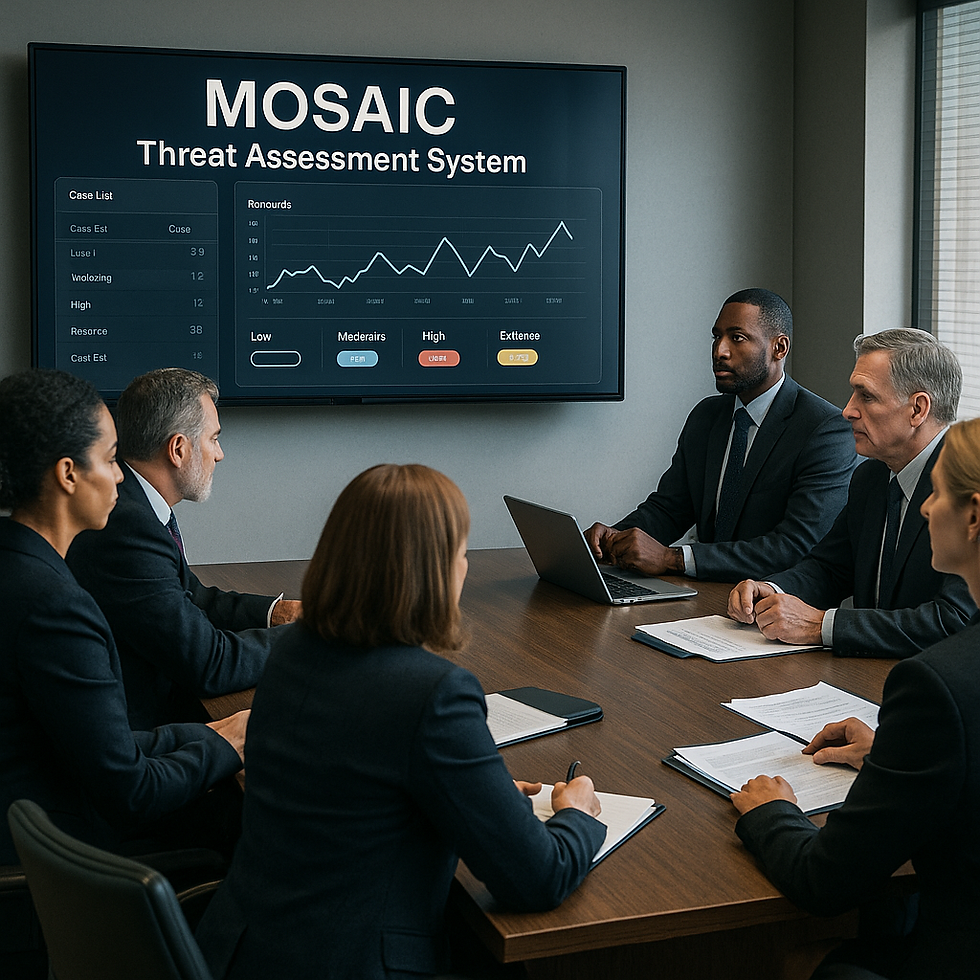What Is a Threat Assessment? Definition, Process, and Real Examples
- CrisisWire

- Sep 29
- 2 min read
A student writes a violent message online. An employee makes threats after termination. A patient lashes out in a hospital corridor.
These moments leave leaders asking: “Is this just anger — or a real danger?”
That’s where threat assessment comes in: a structured process for evaluating whether a threat is credible, what risk it poses, and how to intervene before harm occurs.
The Problem: Why This Issue Exists
Too many leaders still rely on intuition instead of structured assessment.
Zero-tolerance policies punish without context, missing root causes.
Fragmented communication between HR, security, IT, and staff lets warning signs slip through the cracks.
Without a system, institutions are left vulnerable — either overreacting to jokes or ignoring genuine threats.
(Related read: C-STAG Model Explained: Transient vs. Substantive Threats)

Case Studies / Real-World Evidence
Columbine, 1999: Missed warning signs highlight the cost of ignoring patterns.
Hospital Sabotage, 2023: A fired IT staffer gained access to medical devices after no structured insider threat assessment.
University Threat Case, 2022: A professor received repeated anonymous threats; only after structured analysis was the perpetrator identified.
For more official guidance, see FBI’s School Safety Resources.
Actionable Fixes (The Playbook)
1. Define Threat Assessment Clearly
A process to evaluate, categorize, and manage threats before escalation.
Based on behavior, context, and intent — not just words.
2. Build Multidisciplinary Teams
Include security, HR, mental health professionals, and leadership.
3. Use Established Models
C-STAG for schools.
MOSAIC for workplaces and public figures.
4. Document & Follow Protocols
Every case must be logged with rationale — vital for liability and future learning.
For practical frameworks, see The Threat Assessment Handbook, which includes step-by-step team protocols.
Leadership Responsibility
Leaders must embrace threat assessment as core to safety, continuity, and liability protection:
Schools safeguard students and avoid lawsuits.
Hospitals protect patients from both insider threats and cyber-physical attacks.
Corporations preserve reputation and meet insurance demands.
As emphasized in The Prepared Leader, leadership isn’t about reacting — it’s about preparing.
Follow our thought leadership on CrisisWire’s LinkedIn.
📧 Contact us at crisiswire@proton.me for tailored threat assessments, continuity planning, and site security solutions.
Follow CrisisWire:
👉 Explore more insights on the CrisisWire Blog.





Comments